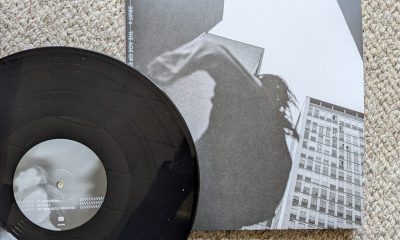
Lesezeit

Recent studies indicate that the cosmos is rich in complex organic molecules, essential components for understanding the origins of life. The European Space Agency’s Rosetta probe, which examined the comet 67P/Churyumov-Gerasimenko over a two-year mission, provided significant insights into the presence of these molecules in space.
Organic molecules, defined as compounds containing carbon, are abundant not only on Earth but also throughout the universe. Their structure allows carbon atoms to create stable chains, forming the backbone of various biological compounds. The findings from Rosetta have transformed our understanding of where these building blocks of life might originate.
During its mission, Rosetta detected over 44 distinct organic molecules, including glycine, a fundamental amino acid. Moreover, recent analyses of the data identified dimethyl sulfide, a gas associated exclusively with biological processes on Earth, suggesting that the conditions for life may be more widespread than previously assumed.
In parallel, the Hayabusa2 mission from Japan and NASA’s Osiris-Rex have been exploring asteroids, returning samples that reveal a treasure trove of organic compounds. The asteroid Ryugu, for instance, is reported to contain at least 20,000 different organic molecules, including 15 types of amino acids.
These discoveries raise profound questions about the emergence of life. Scientists hypothesize that many of the complex organic molecules found in space may have formed long before the solar system itself developed. On moons like Saturn’s Titan, organic molecules exist in lakes of liquid methane, while Pluto’s surface is tinted by tholins, organic compounds that add to the intrigue of extraterrestrial chemistry.
Researchers are keen to understand how these molecules come into existence. The processes that lead to organic complexity in space may resemble chemical reactions occurring in cold, dark environments like molecular clouds, where carbon and other elements can combine to form larger structures. The potential for complex organic chemistry in such conditions suggests that the raw materials for life could be ubiquitous across the universe.
Moreover, the recent observations made by the James Webb Space Telescope have pushed the boundaries of our understanding by detecting organic chemistry dating back to just 1.5 billion years after the Big Bang. These findings point to polycyclic aromatic hydrocarbons, a class of molecules that could play a role in the development of life as we know it.
However, the survival of these organic molecules during the formation of solar systems remains a topic of intense study. As gas and dust clouds collapse to form new stars and planets, the fate of primordial organic materials is uncertain. Recent studies using advanced telescopes have begun to reveal organic molecules within protoplanetary disks, suggesting that some of the complexity may be preserved through the transition from cloud to planetary body.
Ongoing investigations into meteorites, especially chondrites, have also shown that they contain a diverse array of organic compounds. Historical meteorites like the Murchison meteorite, which fell in Australia, revealed over 96 different amino acids, hinting at the complexity of organic chemistry that existed prior to the formation of life on Earth.
As scientists continue to explore the origins and distributions of these organic molecules, they seek to determine whether the building blocks of life are indeed widespread throughout the cosmos. The search for complex organic signatures on other celestial bodies is underway, with future missions like the European Space Agency’s Juice and NASA’s Europa Clipper designed to probe the atmospheres of moons and planets for signs of life.
Ultimately, understanding the formation and transformation of organic molecules in space may provide critical insights into not only the origins of life on Earth but also the potential for life elsewhere in the universe.


Lesezeit

Fri 20th Dec, 2024
On December 20, 1999, Portugal officially relinquished control of Macau, a former colony that had been under its governance for more than 400 years. This transition marked a significant shift in the region’s political and economic landscape, transforming Macau into a prominent gambling hub often referred to as the ‘Las Vegas of Asia.’
Unlike Hong Kong, which experienced significant political unrest following its handover to China, Macau has largely maintained political stability. The region, which is significantly smaller in both area and population compared to its neighbor, has become an appealing destination for tourists, primarily due to its extensive gaming industry.
Macau is characterized by its Cotai Strip, a bustling boulevard akin to Las Vegas, where visitors find a plethora of casinos, luxury hotels, and shopping centers. Numerous major companies have established themselves in Macau, drawing inspiration from the iconic resorts of Nevada. This strategic positioning has solidified Macau’s reputation as a leading entertainment destination in Asia.
Historically, Macau’s connection to China deepened long before the 1999 handover. The influence of Chinese culture and politics has been significant, particularly during the Cultural Revolution, which began in 1966. By the time of the handover, the governance of Macau had already shifted largely towards Chinese influence, leading to a unique political landscape that has not seen the same level of protest as Hong Kong.
In the years following the handover, Macau’s economy has thrived, especially after the liberalization of its gaming industry. The introduction of competitive gaming licenses attracted international operators, particularly from the United States, who have significantly contributed to the local economy. As a result, Macau’s GDP has seen remarkable growth, reaching approximately $70,000 per capita by 2023, which surpasses that of Hong Kong and mainland China.
Despite its economic success, the dependency on tourism and gambling raises concerns about sustainability. The local government has recognized this challenge and has been distributing a portion of its budget surplus to residents, ensuring that the population benefits from the economic boom.
Macau’s cultural identity remains complex, with nearly half of its residents originating from mainland China. This demographic composition has influenced local sentiment towards governance and the broader relationship with China. As political changes continue to unfold in the region, Macau has been praised as a model for the ‘One Country, Two Systems’ principle, illustrating a different trajectory from Hong Kong.
As the 25th anniversary of the handover approaches, the question of Macau’s future remains pertinent. While the region continues to flourish as a gambling and entertainment hub, the potential for greater integration with mainland China looms, prompting discussions about the long-term implications for its autonomous status and cultural identity.
In conclusion, Macau’s evolution from a colonial outpost to a vibrant economic center reflects broader trends in regional politics and economics. As it celebrates a quarter-century since its return to Chinese sovereignty, Macau stands as a testament to the complexities of post-colonial governance in the context of a rapidly changing global landscape.

With statutory health insurance contributions set to increase in January 2026, we look at how the proposed increases could affect your wallet – and what steps you can take to keep the financial impact to a minimum.


Legal Initiatives Intensify Around Abortion Pill Access


Allergie- & Immunologietage | Düsseldorf Congress


30 Tage Bikini Workout | Women’s Best Blog


8 Übungen gegen Cellulite | Women’s Best Blog


Cellulite loswerden? Das hilft! | Women’s Best Blog


BRUIT≤ – The Age of Ephemerality


Me Made Mittwoch mit neuen Regeln am 02. Juli 2025


In diesem Blogartikel findest du eine hilfreiche ➤ CHECKLISTE mit ✔ 5 TIPPS, um deine ✔ Zeit besser einzuteilen & deine ✔ Fitness-Ziele zu erreichen! ➤ Jetzt lesen!